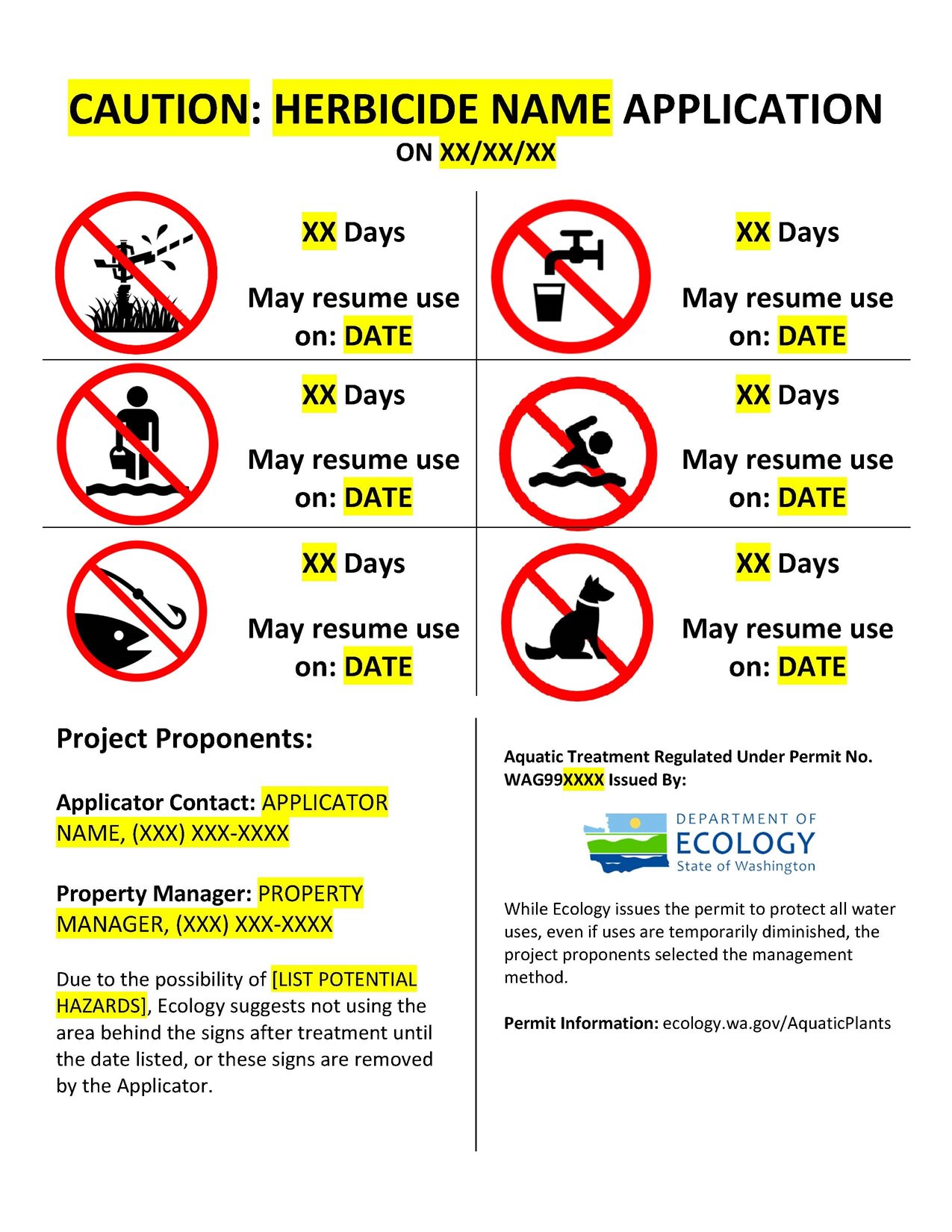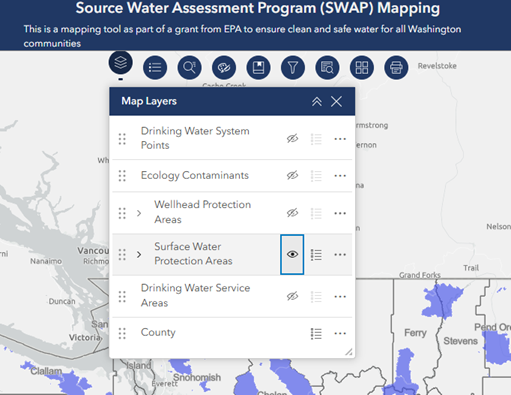Aquatic Plant & Algae Management General Permit
We issue the Aquatic Plant and Algae Management (APAM) General Permit to allow chemical treatments for the management of aquatic noxious weeds, native nuisance plants, and algae. These chemicals are limited to a specific list of aquatic-labeled herbicides, algaecides, biological water clarifiers, adjuvants, marker dyes, shading products, and phosphorus sequestration products. They can be used directly into fresh water (lakes, streams, and rivers) or along shorelines, roadsides, dikes/levees, and ditch banks.
The current permit went into effect on April 21, 2021, and expires on March 21, 2026.
Join our email list to receive email updates about this permit.
We've updated our sign template to use more icons to help applicators warn people about any restrictions.
Current permit documents
- Current permit (expires March 21, 2026)
- Fact Sheet for the draft 2021 permit
- 2020 Small Business Economic Impact Assessment (SBEIA)
- 2017 Supplemental Environmental Impact Statement (SEIS)
Permit reissuance
The public comment period is now closed for the draft permit. We are reviewing and considering all comments received. We will develop a final draft of the permit based on comments and publish an official Response to Comments as an appendix to the factsheet. A final decision on permit issuance is expected early 2026.
- Draft 2026 general permit
- Redline version of the draft permit
- Fact Sheet for the draft 2026 general permit
- Economic Impact Analysis
- Proposed application for coverage: Notice of Intent (NOI)
- Slides from the public meeting and hearings, Oct. 14 & 16, 2025 (pdf)
Changes we are proposing
- Revising monitoring requirements around dissolved oxygen and some types of treatments to reduce phosphorous
- Clarifying treatment timing windows and the process to modify them
- Increasing flexibility around when some aquatic herbicides can be used, based on more detailed ecotoxicity data
- Adding one aquatic herbicide and a lanthanum-based phosphorous control product
- Updating permit language to be consistent with current state and federal laws
Note: An addendum to the existing supplemental EIS that includes information on these products is being prepared and will be finished prior to issuing the final APAM permit.
Public involvement
We provided public notice of the draft general permit (WSR 25-17-084), published a blog with some highlights of the proposed changes to the permit, and accepted public comments from Sept. 10 through Oct. 24, 2025. We hosted two public meetings and formal hearings on October 14 and 16, providing opportunity for formal spoken testimony on the draft permit. Ecology received comments online, by mail, and during our public hearing.
Permittee resources
Map shows specific locations where use of aquatic herbicides is subject to different timing restrictions to protect fish and other priority species. Click image to go to WDFW's map.
Related links
• Ecology Grant Programs for Aquatic Invasive Plants and Freshwater Algae Control
• Ecology Aquatic Weed Technical Assistance
• Department of Health Harmful Algae Bloom Toolkit
• Washington State Toxic Algae Data
• Ecology Permit and Reporting Information System (PARIS)
Contact information
Questions about the permit and implementation:
Shawn Ultican
Aquatic Pesticide Permit Specialist
shawn.ultican@ecy.wa.gov
360-870-3492
For assistance with applications, transfers, termination, and WQWebPortal:
Eman Jabali
General Permit Administrator
aquaticpesticideperm@ecy.wa.gov
564-233-9135




